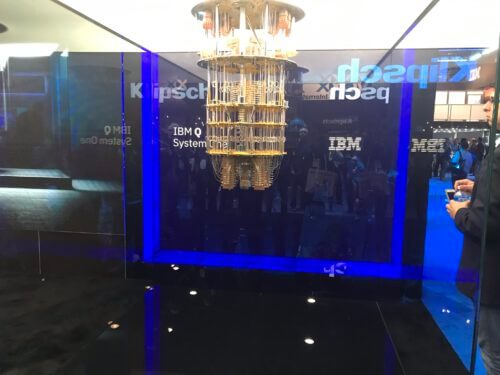The director of IBM's research division gives a glimpse of one of the company's 18 quantum computers and calls on all those interested: come and experience for yourself an experiment on an active quantum computer

Exponential progress in the field of computing together with global cooperation can help in the war against the corona virus and against other major social challenges - this is what Dario Gil, director of IBM's research division, said last week at the THINK conference - the company's annual conference which was held entirely virtually this time.
Gill noted that the emerging field of quantum computing will complement today's supercomputers and other classical computers to accelerate scientific research and technological innovation. According to him, cooperation is the key to success - not only among people but also between the paradigms of classical computing and that of quantum computing. "In moments of crisis it is especially important that we all work together so that we can solve complex challenges."
Classical computers use binary bits to perform calculations. Quantum computers operate within the framework of subatomic quantum physics, utilizing "superpowers" found in nature - superposition, inference and entanglement - to deal with much more complex calculations. These calculations are represented by quantum circuits. According to Gil, such circuits can perform various functions.
The uses go beyond fighting diseases and viruses. For example, one type of quantum circuit might be designed to model financial risk; Another type - to measure the energy of chemical compounds needed for the development of new battery technology. The goal of the collaboration that Gill talks about is to produce libraries of such quantum circuits that will be embedded in classical computing programs.
Since May 2016, more than 180 billion quantum circuits have been executed on IBM quantum computers through the company's cloud, which allows access to quantum computing to more than 230 thousand users worldwide. IBM currently deploys 18 different quantum systems through the IBM cloud. Gil invited anyone interested in trying to work on a quantum computer to enter The IBM Quantum Experience and perform an experiment on one of the most active systems in the world - through the cloud.
Gil also spoke at the event about the concept of "Quantum Volume" which represents a measure of a quantum computer's ability to lower error rates as the number of its operations increases. He noted that the company has at least doubled the quantum volume of its systems every year since 2016 - and is committed to continuing this trend in the coming years.
Some of the largest companies in the world are already using IBM quantum computers, including Daimler AG, which is exploring the potential of quantum computing to develop more efficient batteries; and ExxonMobil which intends to model thermal reactions for use in petrochemical research and development; JP Morgan Chase who use quantum computers to create a methodology for pricing financial derivative contracts and options portfolios - and more.
More of the topic in Hayadan:
- The American government and IBM will allow corona researchers access to 16 of the most powerful supercomputers in the world
- We are close to finishing the development of a 50 qubit quantum computer chip
- "There is still a need to investigate how error correction can be performed before a universal quantum computer can be built"

8 תגובות
An article without any content.
One of the fascinating subjects to examine is pure randomness, whether it is pollen in motion (Brownian motion) to the decisions of investors. To this day, classical computers provide an image known as "pseudo-random" which sometimes deviates from practice. Interesting is the comparison with a quantum computer? According to the mathematician Roger Penrose, we are not there yet.
The director of IBM's research division gives a glimpse of one of the company's 18 quantum computers and calls on all those interested: come and experience for yourself an experiment on an active quantum computer
How do you experiment? Who do you contact? What are the threshold requirements?
After all the flattering and optimistic presentation, the question still arises: what is the actual error rate? Does this quantum computer work to a standard that can be trusted - and what is expected about when such a quantum computer will be built?
Great chandelier
Is the title appropriate for the article? Effective advertising but faithful peg-style journalism
Very nice
Is each such white container one qubit?